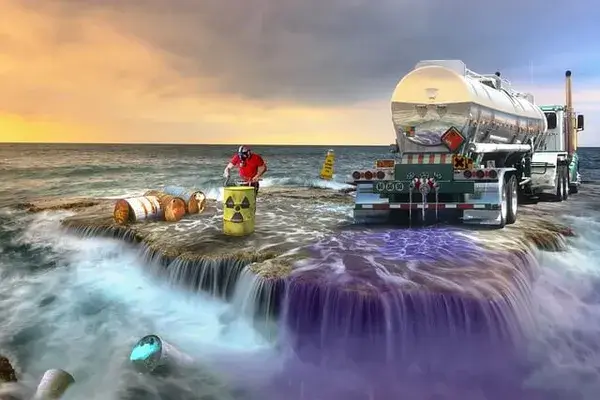Certainly! Environmental legal battles have exposed corporate misconduct, seeking justice for those affected by environmental harm.
These court fights, which address concerns such as climate change and water contamination, not only get global attention but also drive significant progress toward environmental preservation. In the US, environmental litigation plays a critical role in promoting environmental rules, holding companies responsible for ecological harm, and increasing public awareness.
This essay embarks on a journey through five iconic environmental cases in American history, delving deep into their aftermath and enduring legacies.
The PFAS/AFFF Litigation: Tackling “Forever Chemicals”
PFAS compounds, labeled as “forever chemicals” due to their persistent nature in the environment, have seen a significant surge in research over the last decade.
Numerous medical diseases, including ten distinct forms of cancer, immune system dysfunctions, decreased fertility, liver damage, asthma, and thyroid issues are linked to these substances. The utilization of Aqueous Film-Forming Foam (AFFF) firefighting products, contaminated with Perfluoroalkyl substances (PFAS), has significantly contributed to environmental pollution.
The AFFF case spotlights the deployment of firefighting foam laced with PFAS and its consequential environmental pollution. While no settlements have been in the AFFF lawsuit, several high-profile cases have targeted manufacturers like 3M and DuPont. According to the claims, the corporations willfully manufacture and illegally dispose of dangerous substances into the environment, fully aware of the hazards involved.
Following these legal battles, preliminary settlements have been proposed, pending final approval from the courts. Notably, 3M has tentatively agreed to a payout ranging from $10.3 billion to $12.5 billion. Despite DuPont’s $1.185 billion settlement, the conflict endures. These lawsuits serve as a call for regulatory reforms to halt PFAS pollution and uphold justice.
The Deepwater Horizon Disaster and Resulting Litigation
Nevertheless, the 2010 Deepwater Horizon oil spill stands as a haunting testament to the environmental catastrophe endured by the Gulf of Mexico.
Across 87 tumultuous days, the Gulf bore witness to the deluge of nearly 4 million barrels of oil, devastating both local economies and marine habitats. This catastrophe spurred nearly 100,000 lawsuits against BP and its collaborators. Ultimately, a groundbreaking $20.8 billion settlement was brokered in the US, aiming to rectify the profound financial and environmental tolls inflicted by the disaster.
In the aftermath of the incident, rigorous judicial examination prompted the enactment of stringent new regulations surrounding offshore drilling practices.
Hinkley’s Toxic Water and Erin Brockovich’s Landmark Case
The iconic narrative of environmental crusader Erin Brockovich uncovered Pacific Gas & Electric as the culprit behind chromium-6 contamination, a recognized carcinogen, discovered in Hinkley, California’s water supply.
In 1996, a legal battle against PG&E saw over 600 plaintiffs band together, ultimately securing a $333 million settlement. This Hollywood-ready case exposed business pollution cover-ups and the health risks associated with industrial chemicals. Stronger laws across the country were influenced by it to safeguard public water sources.
Taking on the Makers of Roundup Weedkiller
In the wake of Bayer’s acquisition of Monsanto, the spotlight has intensified on Roundup, the glyphosate-based herbicide at the center of hundreds of cancer cases, prompting increased investigation and scrutiny. The majority claim the business did not sufficiently alert them to the danger.
Tens of millions of dollars have been grant to plaintiffs in high-profile verdicts, according to TorHoerman Law. Jurors have concluded that exposure to Roundup probably played a role in the diagnosis of cancer. The legal assault has prompted a $10 billion settlement plan. Despite Bayer’s insistence that the medication is safe. This proves that mass torts have the ability to bring about significant change.
The Toxic Legacy of Love Canal
The Love Canal tragedy, albeit it happened in the 1970s, serves as a stark reminder of the risks involved with improper disposal of hazardous waste.
Moreover, A somber picture of the effects of careless disposal procedures was painting for decades by the industrial trash dumping in the Niagara Falls neighborhood. Which left generations with grave health problems like cancer, reproductive diseases, and congenital malformations. An estimated 22,000 tonnes of hazardous chemicals, including pesticides, dioxins, and polychlorinated biphenyls. Were poured into the abandoned canal by Hooker Chemicals and Plastics Corporation.
Key litigation eventually broke open the scandal, securing a $20 million settlement and relocation for over 1,200 families. Images of children playing near oozing waste shocked the public, leading to the creation of the Superfund law in 1980. This law allows federal authorities to identify and remediate hazardous sites nationwide.
In conclusion, these well-known environmental lawsuits have changed corporate behavior. And environmental regulations significantly in addition to providing affected communities with justice.
Additionally, It takes a great deal of perseverance to take on wealthy businesses and government organizations in environmental litigation. However, as evidenced by the AFFF action, Love Canal. And numerous other examples, historic victories can result from grassroots activity and public interest lawsuits.
Legal action is an effective way to safeguard ecosystems and communities. Ranging from bringing attention to “forever chemicals” to stopping dangerous dumping and obtaining damages for victims. These crucial times serve as a reminder even in the face of ongoing obstacles. Group efforts, legal options, and resolute voices can lead to a more environmentally friendly future.
In our everyday actions, like turning on a faucet or enjoying clean air. And Landscapes lies the power to advance the fight for environmental justice.
